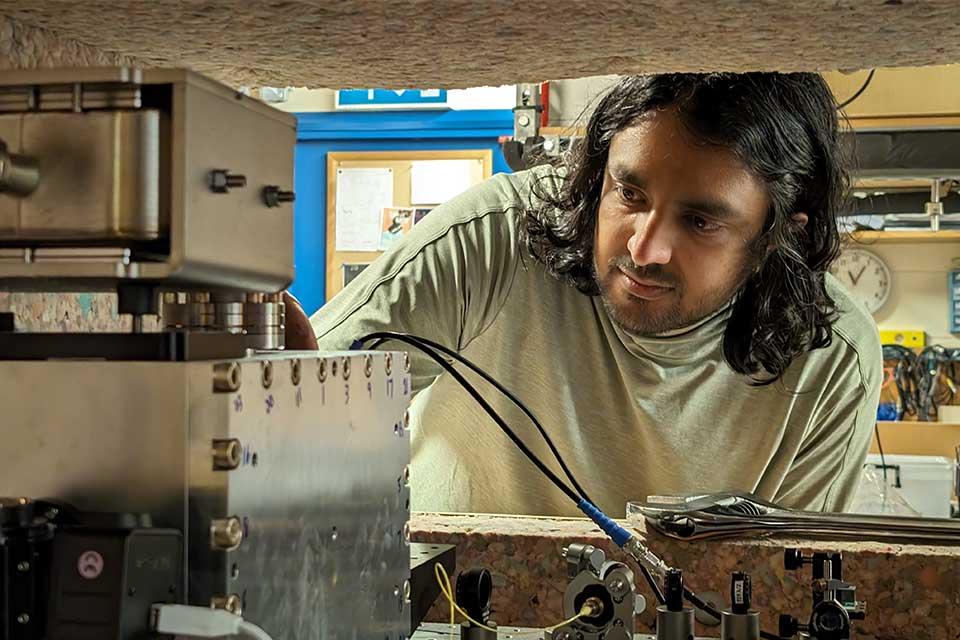We work among extraordinary people doing extraordinary things; get to know some of them by reading these quick-fire interviews.
Name: Raghavendra Srinivas
Job title: Research fellow
What are you currently working on?
My work is within the Oxford Ion Trap Quantum Computing group, where I am lucky to be part of a fantastic team that makes all of the science we do possible. I am currently working on creating nonclassical states of trapped ions. For example, one aspect of my work focuses on using entanglement between ions in separate traps, to enhance frequency measurements between optical atomic clocks. More recently, I have also worked on generating nonclassical states of the ion motion, beyond just squeezed states. The goal is not only to use these interactions for quantum-enhanced metrology, continuous variable quantum computation but to also explore quantum optics in a fundamental way.
Describe a typical day
I am not sure there is a typical day, as in experimental physics the experiment always finds new ways of breaking and surprising you! If there were a typical day, it is some combination of meetings, reading new papers, debugging experiments, analysing data, writing, and if lucky, thinking deeply about physics.
If you had an entire day at your disposal (not at work/studying), what would be your ideal way to spend it?
Hiking in the mountains. I did my PhD in Boulder, Colorado, and miss the mountains daily. Moving here was certainly an adjustment!
What is your favourite place in Oxford?
The gardens in Balliol college.
Plan B: what would you be if you weren’t doing the job you are currently doing?
Maybe linguistics. I have always been fascinated by foreign languages, and one of my favourite non-physics classes I took during my undergraduate studies was in syntax. I was amazed at how we could understand languages in more fundamental way, even across languages with seemingly disparate grammatical structures and origins.

